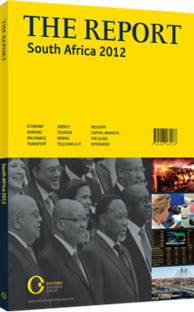OBG talks to Brian Dames, Chief Executive, Eskom

Interview: Brian Dames
To what extent will coal retain its prominence with respect to new electricity generation projects?
BRIAN DAMES: South Africa and the African continent are experiencing exciting growth prospects and ambitions which will not be met without large investments in energy capacity. To ensure a competitive economy, we need to address the critical issue of ensuring that energy is accessible, affordable and clean.
Africa has long been considered the “dark continent”, with South Africa being the notable exception. We are by far the largest and most industrialised economy on the continent and a large part of this achievement has come from the ability over the years to offer competitive energy prices. South Africa generates around 40% of Africa’s total electricity, and today over 75% of South Africans have access to electricity.
For the most part, this electricity output has been sourced from coal. We therefore have to remember that coal has been vital to the achievements of the country and acknowledge that it will continue to play a vital role in helping our economy grow even further as renewable and alternative sources cannot meet new demand alone. Furthermore, because Eskom purchases large volumes of coal for domestic consumption, this also helps drive the national revenue earned from coal sales, since miners will only invest in new capacity reserves if they know that there is a guarantee of a large domestic buyer in the market.
Moving forward, an increasingly important objective, in addition to increasing electricity access and affordability, is the need to provide cleaner energy that will minimise the environmental footprint of electricity generation. New coal plants, which employ advanced technologies, will be built with the potential for greater carbon capture and storage. We are also continuing efforts to develop underground coal gasification, which could feed into existing plants and lead to significant reductions in carbon emissions.
Diversifying the energy mix also remains critical. Solar power has significant potential, and nuclear and biomass will also play increasingly important roles for the energy sector in the future.
The private sector will have opportunities to partner and contribute to renewables as this is for the most part a new and emerging space. We will look to work with the private sector as both partners in new projects across the continent, and through the supply chain as sources of coal and biomass feedstock.
How do you expect electricity prices to be adjusted going forward, and how can rates be made more accessible and affordable to the population?
DAMES: The need to expand electricity infrastructure is urgent, and is now being executed. As a company we acknowledge that things should have happened earlier. Prices in South Africa remain comparatively attractive. So the concern is not the price levels, but the rate at which they need to be raised, which needs to be more realistic. If we cannot demonstrate the ability to earn solid returns, borrowing funds to invest in much needed new capacity will be a challenge.
Furthermore, and this is something often taken for granted, there is the understanding that if we borrow from abroad through foreign aid and development agencies, the funding often comes with obligationsand commitments in terms of project-related benefits for the lenders. However, if new projects can be self-financed, we can ensure that we source locally and create local jobs and feed the domestic value chain.
Politicians in most countries, understandably, will not allow electricity prices to be determined by the market. Achieving prices that are both competitive and reflective of cost is difficult.
One way to ensure affordable prices for those most vulnerable to increases is through subsidisation. Lower income households receive free electricity up to a certain consumption threshold and then have to pay an increasing block-unit rate for consumption above the base level. Households that consume more can afford to do so and pay significantly more per unit.
You have reached the limit of premium articles you can view for free.
Choose from the options below to purchase print or digital editions of our Reports. You can also purchase a website subscription giving you unlimited access to all of our Reports online for 12 months.
If you have already purchased this Report or have a website subscription, please login to continue.

